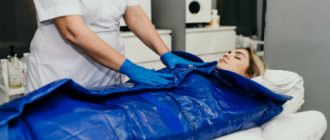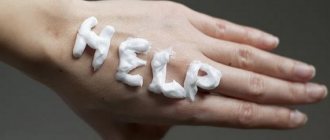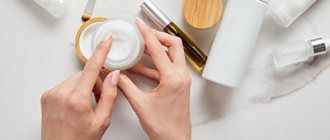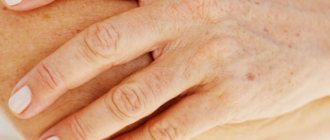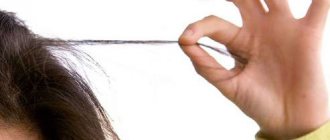What are blisters and their features
In most cases, blisters in a child do not linger for a long time, which is explained by their structure. These are cavityless formations that are a consequence of acute inflammation of the surface layer of the skin. Almost always the child itches because of blisters; they cause him severe discomfort. Most often, the bubbles are round in shape, but sometimes oval elements are also found. The color of the rash varies from pinkish to red, white or gray.
A similar rash appears during exudation, when blood plasma enters the intercellular space. In this state, it is easier for the immune system to act on pathogens that have entered the body. Transparent or white blisters in a child occur on different parts of the body. It all depends on the pathogen, allergen or other provoking factor that caused the inflammation. For example, large blisters on a child are most likely caused by a burn, but they are classified as injuries rather than rashes.
Blisters are also called urticaria. They are slightly raised and denser areas of skin that are formed as a result of swelling of the dermis, which is the middle layer of the skin. In general, such elements are called urticaria. In young children, it is accompanied by constant restlessness and the presence of scratching marks in areas of maximum rash.
On the legs and arms
Blisters in a child’s extremities occur due to insufficient hygiene. Even microcracks can become a “gateway” for infection, which provokes local inflammation. If the blisters resemble hives, then this is an allergy, which can be provoked by:
- food products;
- contact with synthetic clothing;
- medications;
- dust;
- freezing;
- Pets.
In this case, blisters may appear on the palms and soles of the feet. They are accompanied by other allergic symptoms. This can be severe itching, watery eyes, sneezing, sore throat, etc. There are practically no diseases that could cause blisters of this localization, but it is still worth visiting a doctor with your child.
Watery formations on the skin
Watery pimples are scientifically called vesicles. This is when a pimple appears on the skin with clear liquid inside. There can be one or many pimples. Pimples can merge into groups or be at a distance from each other. The location can be any: on the skin of the whole body and on the mucous membranes of the genital organs, on the scalp, only on the lips, or only in the form of an isolated lesion of a segment on the skin like a twig, strewn with such pimples. The pimple itself, with clear liquid inside, may or may not have a light red rim on the skin at the base of the watery vesicle. There may also be a slight depression in the center of the watery pimple or none at all. Doctors call this an umbilical indentation.
The size of a watery pimple can vary from small to large. After the appearance of a pimple, its further development occurs. The watery blister may burst instantly and become crusty or wet. It can also have dense walls and not open for a long time. And sometimes the transparent contents are replaced by cloudy and purulent ones.
Pimples can cause severe pain at the site of the rash, a feeling of fullness and itching. There may also be changes in body temperature, runny nose, sore throat and general malaise. Or maybe none of this will happen.
So what do these many-sided watery pimples mean? What will a pediatrician, dermatologist or therapist say with each variant of the appearance of a pimple with watery contents and with its subsequent transformations? What causes such diverse types of pimples filled with clear liquid?
This can occur with allergies, with purulent skin infections, with herpes infections in the form of herpes types 1 and 2, and with herpes called varicella zoster.
All these reasons have different clinical manifestations. And only on the basis of the totality of clinical manifestations will a dermatologist or pediatrician make a diagnosis. But to confirm the diagnosis, the doctor will suggest taking tests. This may be a study of the contents of the bladder in the form of PCR for viruses or culture for flora, a blood test for the presence of antibodies for viruses or infectious diseases.
And, of course, treatment directly depends on the diagnosis and tests.
If the diagnosis is “herpes simplex”, or “genital herpes”, or “shingles”, then the doctor has many effective antiherpetic drugs in his arsenal. These include ointments, tablets, syrups, and solutions for administration both intravenously and intramuscularly. The doctor may prescribe medications to correct the immune system. Your doctor may also recommend vaccines for herpes simplex and chickenpox. The fact is that the chickenpox and shingles viruses have the same origin and name, varicella zoster. And those who have suffered from live varicella zoster virus, have had chickenpox, remain carriers of the varicella zoster virus in the nervous ganglia for life. Only it is dormant and, under adverse influences, can be activated and cause an unpleasant disease in the form of shingles.
Well, what if the diagnosis is “chickenpox”? For chickenpox herpes, the doctor will prescribe treatment for pimples and isolate the patient for 11 days from the moment of the rash. By the way, it is better for contact people to receive the chickenpox vaccine within 72 hours after contact with chickenpox to avoid getting sick.
What if it's a skin infection? Doctors call this skin infection pyoderma. In the case of a purulent lesion, the doctor will prescribe local ointments and solutions and decide on the need for antibiotic therapy depending on the situation.
Well, what if it’s an allergy that manifests itself this way? For allergies in the form of eczema or other manifestations, local treatment with ointments and solutions with antiallergic properties is indicated. Everything necessary will be prescribed by the doctor based on the individual characteristics of the disease. The doctor will also prescribe a diet and medications that cleanse the body of allergens and toxic substances and prevent the development of allergies.
The main thing is not to let the situation get worse and consult a doctor in time (at the earliest manifestations of the disease).
All over the body
If there are blisters on the child’s body, i.e. throughout the body, that is, there is a very high probability that the cause is one of the infections. Moreover, many of these diseases are contagious, so it is better to call a doctor at home. Possible causes of rashes:
- streptoderma;
- chicken pox;
- follicular tonsillitis;
- erysipelas;
- enterovirus;
- shingles;
- pemphigus;
- herpes types 1 and 2.
In case of infection, in addition to rashes, fever, general weakness and chills are observed. The location of the bubbles may indicate the type of disease. For example, with pemphigus, a rash appears on the abdomen, around the navel and on the thighs. A variation of this disease is Ritter's disease (exfoliating dermatitis). The blisters first appear around the mouth, usually during feeding (if the woman has cracked nipples), and then spread throughout the body. Erysipelas also begins in the area around the navel, after which it quickly spreads to neighboring tissues.
On fingers and palms
Blisters on the palms of a child are one of the common manifestations of eczema, which develops against the background of blockage of the sweat glands. This disease is called dyshidrosis. Blisters on the palms of a child also occur with scarlet fever. They usually form after parents have discovered other symptoms, so the rash no longer surprises them.
Also, blisters on a child’s toes occur due to:
- allergies;
- dermatitis;
- insect bite;
- lack of vitamins.
Vesicles - water pimples on the hands: what are they?
The appearance of a rash on the hands may indicate the presence of the following pathologies:
- Eczema, allergies. It may occur as a result of taking medications, eating certain foods, or using detergents.
- Mechanical damage. These include burns, insect bites, and irritations.
- Viral infection. It is not uncommon to see signs of herpes or chickenpox on the hands58.
- Scabies. In addition to watery pimples, peeling, weeping wounds, itching, which is especially intensified at night, and scabies appear58.
On the feet and heels
Blisters on a child’s foot often occur due to a fungal disease. Heel spots can be a result of wearing uncomfortable shoes. These are common calluses that occur immediately after rubbing the skin. Because of them, the child’s gait is disrupted, since it is painful for him to walk in uncomfortable shoes.
Another reason is again an allergic reaction, especially if there was contact with an allergen at the site of the rash. Another cause of blisters is autoimmune arthritis, which is characterized by joint stiffness and pain.
On the face
Blisters on a child’s face occur for the following reasons:
- herpes. The rash is localized on the lips or around the mouth. In the first 2-3 days it causes itching, after which it opens and becomes covered with crusts;
- viral infections: scarlet fever, influenza, rubella, chicken pox, measles;
- allergic reaction to sunlight. Blisters are localized under the eyes and on the chin.
Almost all infections do not have a rash localized only on the face. Most often, rashes are observed on other parts of the body. Only herpes is characterized by a rash of a certain localization, most often around the mouth.
Diagnostics
Depending on the nature of the manifestations, their color and structure, the main cause of the rash can be determined. Diagnostics in the laboratory means contacting the following specialists:
- Allergist. Examines specific areas of the skin using special tests to detect the presence of antibodies and antigens.
- Dermatologist. Send the patient for an examination containing blood tests. If elevated levels are detected, the doctor has the right to recommend treatment from specialized doctors.
- Cosmetologist. Adjusts skin care.
- Endocrinologist. Will check hormone levels and their relationship with watery rashes.
How to get rid of acne marks
Facial rashes are a common problem that almost every person faces.
Often the tests recommended for the patient include a complete blood count, cytological examination of skin scrapings, allergy tests and biochemistry.
The obtained indicators indicate the state of the body: increased parameters will be a signal for making a diagnosis. Endocrinologists may prescribe tests for cortisol and prolactin.
Indicators of herpes are watery manifestations on the face, temperature, redness, burning, as well as a cracked crust from acne. In this case, doctors prescribe treatment that eliminates the infection from the body.
Why can our articles be trusted?
We make health information clear, accessible and relevant.
- All articles are checked by practicing doctors.
- We take scientific literature and the latest research as a basis.
- We publish detailed articles that answer all questions.
If the skin is affected by a scabies mite, diagnostics reveals the presence of severe itching that cannot be tolerated. Under a microscope, after taking skin samples, the specialist detects the organism in various stages of its life on the person's face.
The nature of the watery contents also gives the doctor a basis for the diagnosis. For example, pink pimples with fluid may indicate the presence of molluscum contagiosum. Formations that quickly open and dry indicate the presence of chickenpox. Redness around pimples and swelling will tell the doctor about allergic dermatoses.
On the buttocks and scrotum
Blisters on a baby's bottom are a common symptom of skin irritation. In infants it results from:
- allergies to diaper or underwear materials;
- insufficient hygiene of the genital area;
- rubbing the skin with tight underwear;
- prickly heat (sleeping in a hot room, dressing inappropriately for the weather, hot time of year).
Diaper rash sometimes appears even with sufficient care, if the child has increased skin vulnerability or a tendency to allergic conditions. Miliaria is tiny swellings of the upper layer of skin like reddish or bright pink bubbles. They appear in the back, chest, armpits and neck folds.
A fungal infection can also cause a rash on the buttocks. It forms on the scrotum due to genital herpes. Once it enters the body, this virus remains in it forever and when the immune system weakens, it makes itself felt.
In teenagers, a rash on the buttocks can accompany a disease such as psoriasis. In this case, rashes also occur on other parts of the body: elbows, along the hairline on the forehead, on the head, etc.
Treatment
Under the supervision of an experienced doctor, competent treatment of watery formations on the face is carried out, corresponding to the established diagnosis.
Self-medication is dangerous with complications!
Attention
Despite the fact that our articles are based on trusted sources and have been tested by practicing doctors, the same symptoms can be signs of different diseases, and the disease may not proceed according to the textbook.
Pros of seeing a doctor:
- Only a specialist will prescribe suitable medications.
- Recovery will be easier and faster.
- The doctor will monitor the course of the disease and help avoid complications.
find a doctor
Do not try to treat yourself - consult a specialist.
If the rash is not an allergic reaction, the doctor prescribes specialized medications that affect the affected organs. Experts recommend relieving external symptoms with ointments and creams.
The following drugs are used for treatment:
- Painkillers and anti-inflammatory drugs prescribed in case of infection in the body.
- Antiallergic drugs.
- Ointments and gels for external use with the characteristic feature of cooling the skin surface. They will become appropriate in the presence of an unpleasant burning itch.
If watery blisters on the face become a manifestation of intoxication, the doctor prescribes sorbents. They absorb accumulated toxins and remove them from the body, eliminating the root cause of the rash.
Probiotics help restore intestinal microflora after allergies. It strengthens the immune system and protects the body from exposure to toxic substances.
If prickly heat has been diagnosed, zinc-based ointments are used. They improve tissue regeneration, promoting rapid healing of affected areas. The drugs are considered universal because they have no contraindications.
How to relieve acne inflammation
Acne is a widespread problem.
If herpes is the cause of watery pimples on the face, the doctor will prescribe an antiviral drug. In addition, an immunostimulating agent is prescribed, which activates the body's defenses.
The treatment complex also includes normalizing the diet - excluding fatty, spicy foods that affect the functioning of the liver and pancreas. It is better to diversify the table with microelements and vitamins, which significantly increase immunity. Adequately structured treatment gives positive results within a week after its start.
Practical advice
The main discomfort from rashes is that they itch. But under no circumstances should you scratch them, since microtraumas resulting from the bursting of bubbles can cause a secondary bacterial infection. This will only aggravate the situation and worsen the child’s condition. To prevent the rash from itching, you can give your child an antihistamine.
If there are signs of an infectious disease, you should never self-medicate. If you have fever, nausea, diarrhea and vomiting, you should definitely consult a doctor. The younger the child, the more severely he suffers from an infectious disease. In addition, many pathologies can provoke serious complications.
Other useful tips for parents:
- if 10-15 hours have passed since the rash appeared and it has not disappeared, it is necessary to examine the entire body and write down the location of the rash, measure the temperature, and then consult a doctor;
- Before consulting a specialist, it is allowed to treat the rash with an antiseptic drug.
In the first year of life, children often develop various rashes. This is explained by the fact that delicate skin is still only adapting to new conditions. If a rash appears after sleep, if there is no fever in the background, there is no need to worry. If the rash does not cover most of the body, then most likely it is not dangerous. Otherwise, you should seek help from a specialist.
Causes
Most often, water pimples appear in the face area. This feature is associated with the special structure of the skin, as well as blockage of the sebaceous ducts after sweating.
Watery pimples most often appear due to allergies, sometimes the cause is hormonal imbalances, fungal, viral and tick-borne infections, prickly heat, etc.
Diagnostics: consultations with an allergist, dermatologist, endocrinologist, often cytology and blood tests.
Treatment: anti-inflammatory, antihistamines, probiotics; local antiseptics, cooling ointments.
The causes of the appearance of these formations can be both allergic reactions and pathologies of internal organs. Some of them require treatment, others go away on their own.
How to get rid of acne quickly
Acne is a common skin problem, affecting about 85 percent of the population.
Elements of a rash with internal water content in an adult can be caused by the following factors:
- hormonal imbalances;
- herpes;
- individual intolerance to medications;
- allergy;
- prickly heat;
- fungal infections of the body;
- varieties of subcutaneous mites;
- intoxication of the body;
- acute viral and infectious diseases: measles, chickenpox, rubella;
- metabolic disease .
Often, stressful situations can trigger the appearance of watery acne on the face. In addition, hypothermia or a cold is also included in this list.
An accompanying unpleasant phenomenon is redness, swelling and itching. Depending on the complex of combined symptoms, specialists determine the nature of the disease.
If this problem is detected in the facial area, it is recommended to consult a dermatologist. He will conduct an oral consultation, take skin tests and refer you for the necessary tests.
The most common cause of the problem in medicine is an allergic reaction. After the action of the pathogen on the skin of the face, the body responds with a rash in the form of pimples filled with liquid. The allergen can be different: plant pollen, chemicals, animal hair, food.
The body reacts to cold with similar manifestations. When in contact with snow or low temperature water, pimples slowly spread across the face. The rash often affects the cheek area and upper lip area. If there is itching, it is recommended to immediately consult a doctor for an accurate diagnosis.
Watery pimples mainly indicate an allergic process.
Less often we talk about herpetic lesions. In any case, an in-person consultation with a dermatologist is necessary to identify the cause of the disease.
Dermatovenerologist, cosmetologist
Zhikhoreva Inna Viktorovna
6 years experience
Pimples formed on the nose, corners of the mouth or lip indicate herpes. This infection requires proper treatment, so you should not prescribe medications yourself.
How to make an appointment with a dermatologist
To make an appointment with a pediatrician or dermatologist, you can call us at the contact number or use the online form where you can select a specialist and an appointment time. We work all days, including weekends and holidays. JSC "Medicine" (clinic of academician Roitberg) is located in the Central Administrative District, near the Mayakovskaya, Tverskaya, Chekhovskaya, Belorusskaya and Novoslobodskaya metro stations. In addition, you can use our service to call a doctor at home. This will be convenient if the child has a serious general condition or you suspect the presence of a contagious disease.



